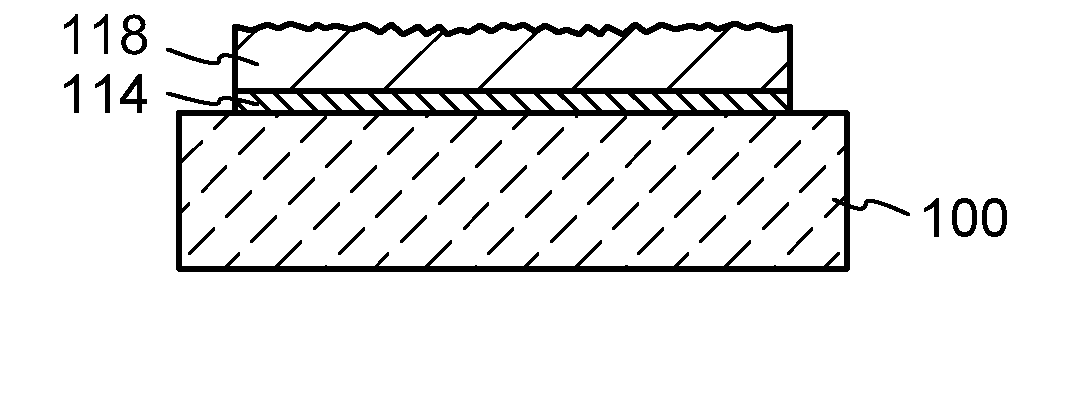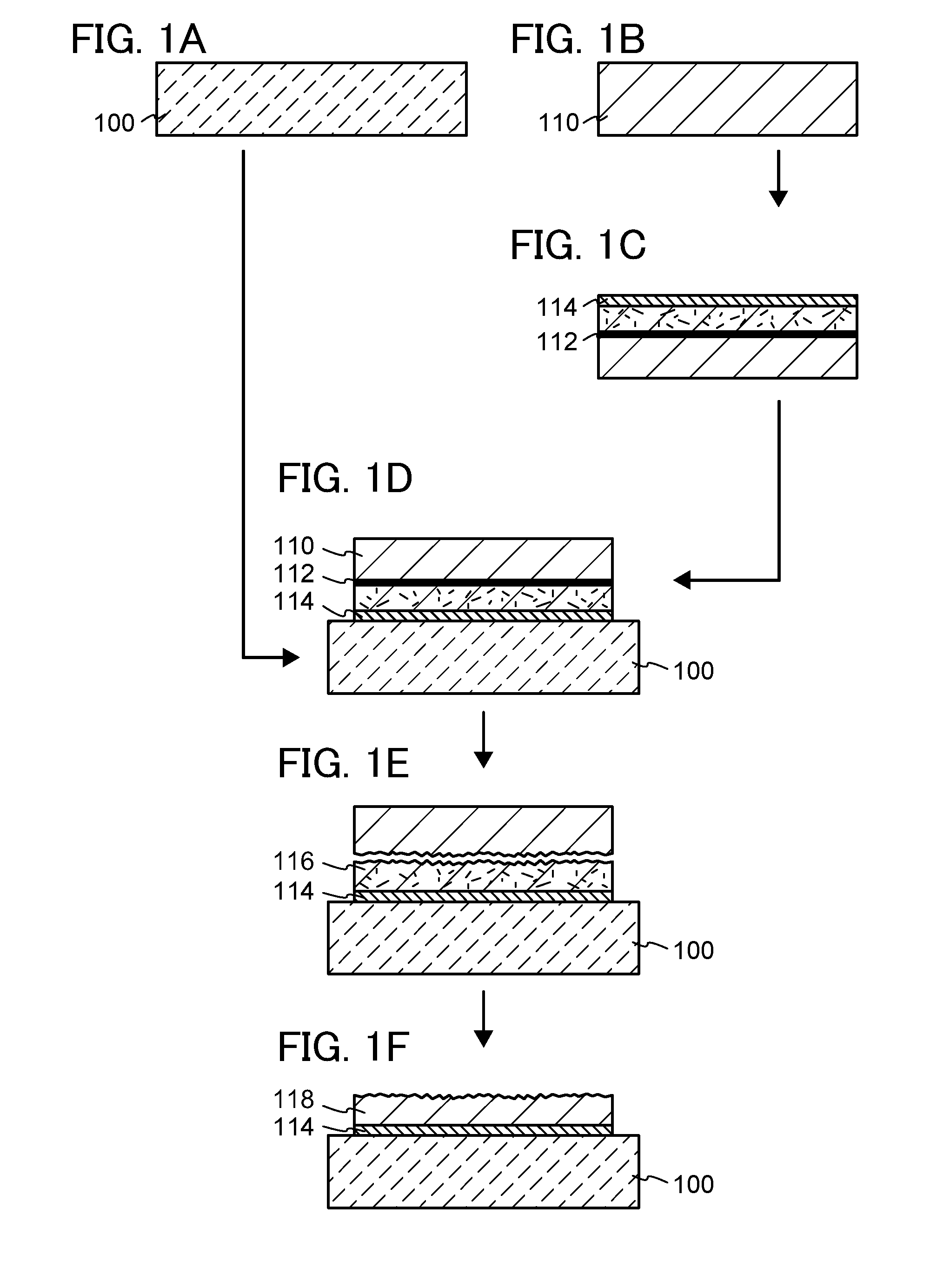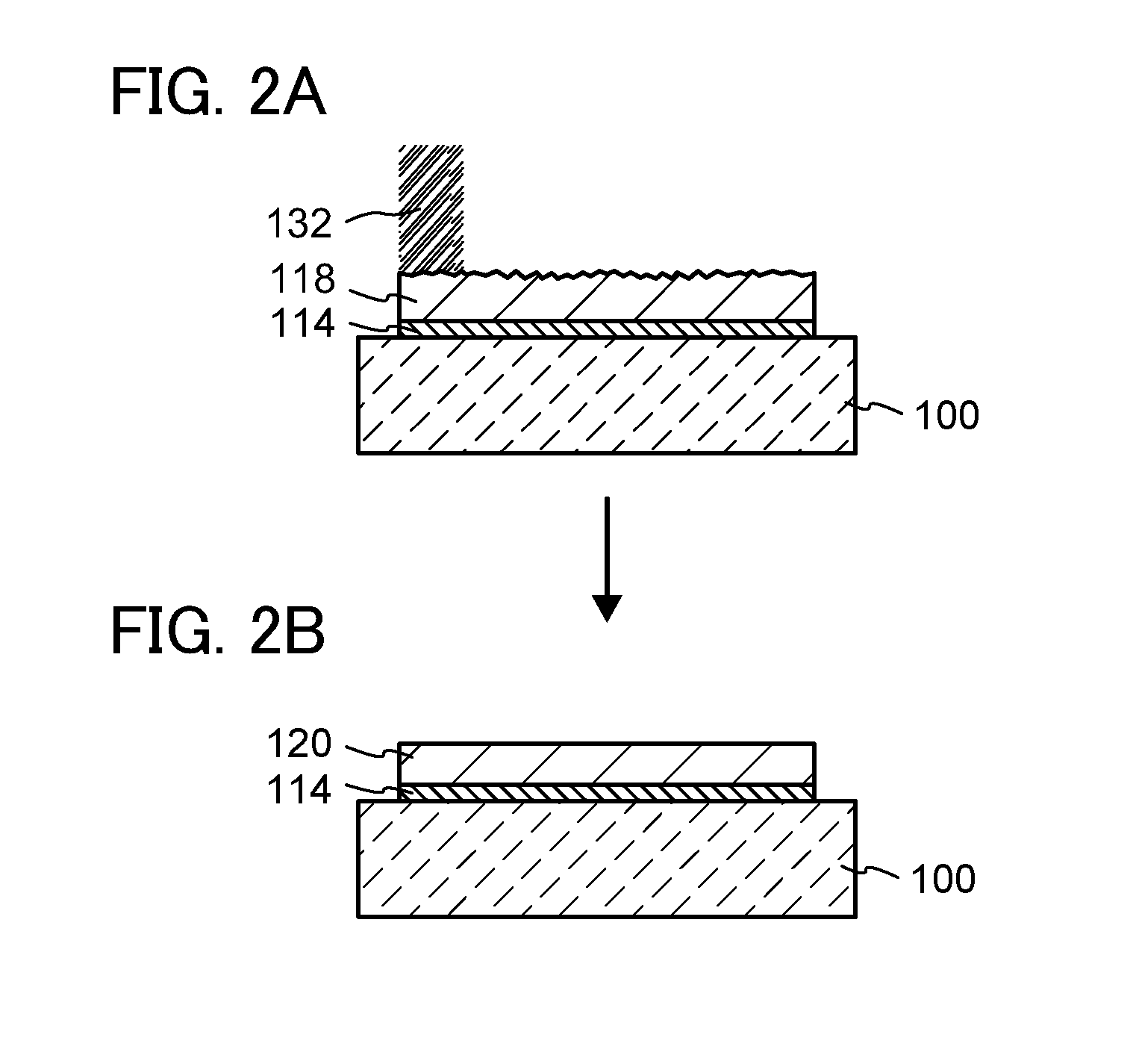Method for manufacturing soi substrate
- Summary
- Abstract
- Description
- Claims
- Application Information
AI Technical Summary
Benefits of technology
Problems solved by technology
Method used
Image
Examples
embodiment 1
[0035]In this embodiment, an example of a method for manufacturing a semiconductor substrate (an SOI substrate) will be described with reference to drawings. Specifically, the case of manufacturing a semiconductor substrate in which a single crystal semiconductor layer is provided over a base substrate will be described.
[0036]First, a base substrate 100 and a single crystal semiconductor substrate 110 are prepared (see FIGS. 1A and 1B).
[0037]As the base substrate 100, a substrate made from an insulator can be used. Specific examples thereof include: a variety of glass substrates used in the electronic industries, such as substrates formed with aluminosilicate glass, aluminoborosilicate glass, and barium borosilicate glass; a quartz substrate; a ceramic substrate; and a sapphire substrate. Note that when the above-mentioned glass substrate contains a large amount of boric acid (B2O3), the heat resistance of glass is improved; when it contains a larger amount of barium oxide (BaO) tha...
embodiment 2
[0073]In this embodiment, anther example of a method for manufacturing a semiconductor substrate (an SOI substrate) will be described with reference to drawings.
[0074]First, a base substrate 100 is prepared (see FIG. 3A). The details of the base substrate 100, for which Embodiment 1 can be referred to, are omitted here.
[0075]Next, a nitrogen-containing layer 102 (an insulating film containing nitrogen, such as a silicon nitride (SiNx) film or a silicon nitride oxide (SiNxOy (x>y)) film) is formed over a surface of the base substrate 100 (see FIG. 3B).
[0076]The nitrogen-containing layer 102 formed in this embodiment functions as a layer for bonding a single crystal semiconductor layer (as a bonding layer) in a later step. The nitrogen-containing layer 102 also functions as a barrier layer for preventing an impurity contained in the base substrate, such as sodium (Na), from diffusing into a single crystal semiconductor layer.
[0077]As mentioned above, the nitrogen-containing layer 102 ...
embodiment 3
[0105]In this embodiment, a method for manufacturing a semiconductor device using the above-described semiconductor substrate will be described with reference to FIGS. 5A to 5D, FIGS. 6A to 6D, and FIGS. 7A and 7B. Here, a method for manufacturing a semiconductor device including a plurality of transistors as an example of the semiconductor device is described. Note that various semiconductor devices can be formed with the use of a combination of transistors described below.
[0106]FIG. 5A is a cross-sectional view of a semiconductor substrate which is manufactured in accordance with Embodiment 1.
[0107]In order to control threshold voltages of TFTs, a p-type impurity element such as boron, aluminum, or gallium or an n-type impurity element such as phosphorus or arsenic may be added to a semiconductor layer 500 (corresponding to the single crystal semiconductor layer 120 in Embodiment 1). A region to which the impurity element is added and the kind of impurity element to be added can b...
PUM
 Login to View More
Login to View More Abstract
Description
Claims
Application Information
 Login to View More
Login to View More - R&D
- Intellectual Property
- Life Sciences
- Materials
- Tech Scout
- Unparalleled Data Quality
- Higher Quality Content
- 60% Fewer Hallucinations
Browse by: Latest US Patents, China's latest patents, Technical Efficacy Thesaurus, Application Domain, Technology Topic, Popular Technical Reports.
© 2025 PatSnap. All rights reserved.Legal|Privacy policy|Modern Slavery Act Transparency Statement|Sitemap|About US| Contact US: help@patsnap.com



